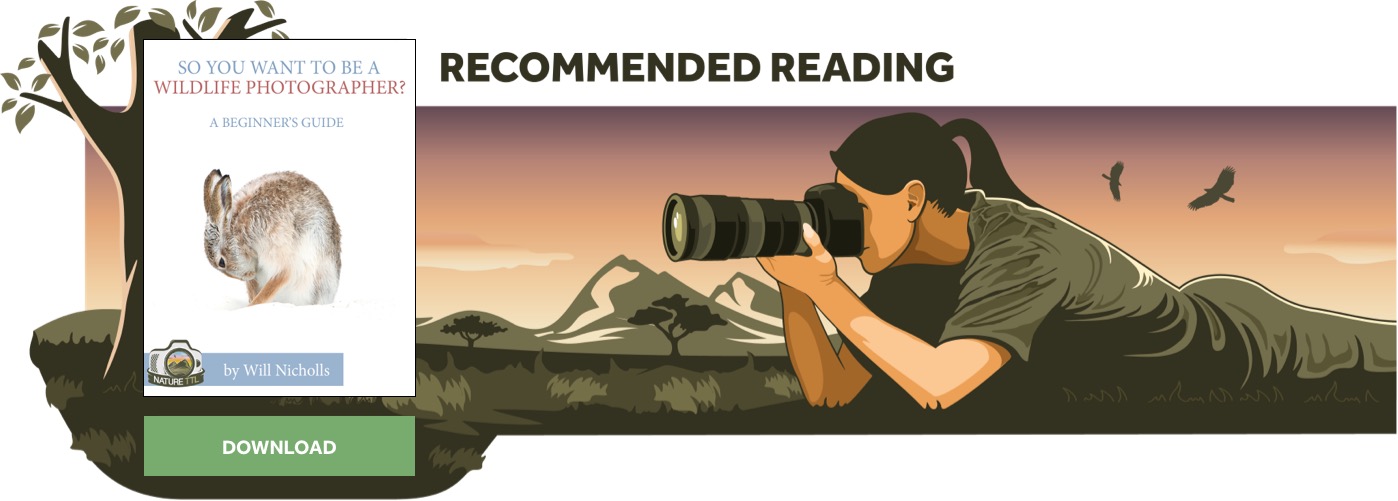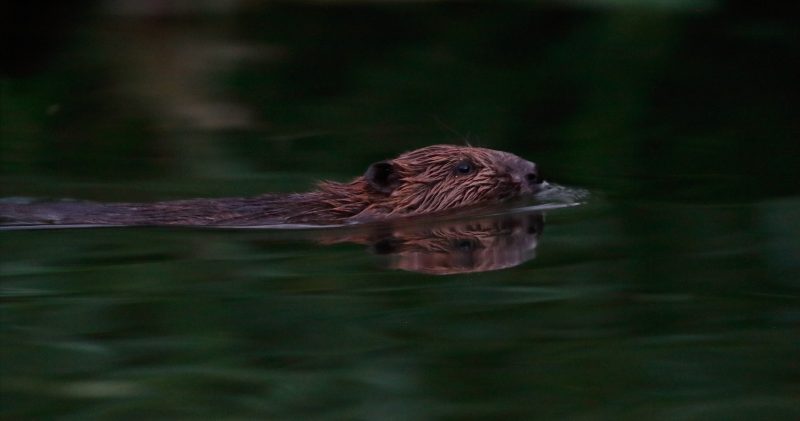How to Photograph Beavers in the UK

The comeback of beavers is, in my opinion, the most exciting conservation success story in the UK at present. Beavers are amazing and charismatic creatures in their own right, but what makes them particularly special is the way they transform the environments in which they live. For this reason, they are well known as a keystone species.
By felling trees and building dams, they can transform single streams into complex wetlands, creating a huge variety of habitats for other wildlife, as well as providing the broader environmental benefits of holding back floodwater and filtering sediment.


Beavers were hunted in medieval times for their fur and castoreum (a substance secreted from their scent glands which was used in perfume). They also suffered due to drainage of wetlands for agriculture, and the last few individuals are thought to have clung on in Yorkshire in the 1700s.
Since the early 2000s, however, there have been efforts to reintroduce them. The first reintroduction by a conservation organisation was orchestrated by Kent Wildlife Trust in 2002, at Ham Fen nature reserve in east Kent.
Another trial reintroduction began in 2009 in the west of Scotland at Knapdale. In addition, several private landowners have kept beavers in enclosures and, as a result of escapes, there are now wild beavers living in roughly 10 river catchments across the UK.
Read more: How to Photograph Wildlife in Nature Reserves
Where to find beavers in the UK
In the south west, the beavers on the River Otter were incorporated into an official trial run by Natural England, from 2015 to 2020. The purpose was to assess their impacts on the ecosystem, and test management interventions to solve any problems the beavers caused. The village of Otterton is a popular and accessible location to watch and photograph beavers from the riverbank.
Small populations of wild beavers are also present in the Tamar and Bristol Avon catchments. In the Tamar catchment, the Coombeshead rewilding project is one of the best places to see them. Here there are huts in which to stay and explore the streams, which have been described as the most pervasively beaver-modified watercourses in Britain.
The land is also home to Exmoor ponies, mouflon sheep, Iron age pigs, and Heck cattle, which are being used to create a diverse mosaic of wood pasture habitats.
In Kent, a significant population of beavers is living in the River Stour, and gnawed trees can even be seen in the middle of Canterbury. In the east of England, there are enclosed beavers at Spains Hall Estate in Essex, Wild Ken Hill in Norfolk, and on the River Glaven in Norfolk.
In the north, two Wildlife Trust nature reserves have large beaver enclosures: Willington Wetlands in Derbyshire and Idle Valley Nature Reserve in Nottinghamshire. There are also beavers at the Lowther Estate in Cumbria.
More beaver enclosures are being set up all the time, so this is definitely not a comprehensive list. New projects are often reported in the news, and there are now enclosed beavers in most parts of the country.
In Scotland, over a thousand beavers are spread across the catchment of the River Tay, with smaller numbers in some of the adjacent river systems. This is by far the largest population in the UK.
A particular highlight is the Bamff Estate near Blairgowrie, where beavers have been allowed to transform the landscape for almost two decades with very little human intervention, creating huge dams and wetlands.
One of the best locations for photography is the Cornwall Beaver Project at Woodland Valley Farm near Truro. Here the beavers are in a small area of just 2 hectares, and can be reliably observed from the edge of a medium sized pond.
The site has an impressive sequence of dams and wetlands, and the recent construction of a boardwalk means that it is easily accessible to everyone. You will need to book in advance to visit most of these enclosed projects. Look on their websites for details.
When to see beavers in the UK
Beavers are mainly active at night. They normally emerge several hours before it gets dark, and go back into their lodges or burrows several hours after it gets light. This means that the best times to photograph them are early in the morning and late in the evening.
Luckily, this creates a lot of potential to photograph beavers in atmospheric conditions, such as golden light or misty mornings. It is easier to see them in the summer rather than in the winter – the long summer evenings are perfect for photographing them. Also, in the summer they have their kits, which tend to be less shy, and therefore easier to photograph, than the adults.
Read more: Inspiration for Summertime Wildlife Photography
Beaver behaviour and natural history
Beavers are extremely well adapted to aquatic life. Their back feet are large and webbed, and they typically use the back feet alone for propulsion in the water. This means that their body often appears quite rigid when they are swimming, in contrast to otters which swim with sinuous movements of their whole body.
So, if you have a tripod with a gimbal or fluid head, it can be very easy to pan with the movement. Have a go at using a slower shutter speed to blur the motion of the passing water.
Adult beavers float very low in the water, with their back almost underwater and only the head properly visible. This means that you need to position the autofocus points on their head.
Note that kits float higher, with their back exposed above the water level, and often swim in a less smooth, more jerky, way. In addition to the size difference, this makes it easy to distinguish between kits and adults.
Whilst the back feet are strongly webbed for propulsion, the front paws are smaller, less webbed, and used primarily for grasping and manipulating vegetation, mud, and sticks. If you are lucky, you may be able to photograph beavers grasping branches with their front paws and eating the bark, or holding onto a stem as they gnaw through it.
When building dams, they use their front paws to push mud up from the bottom of a pond and onto the dam. In older dams, this forms a shallow ramp of sediment on the upstream side, such that the width of the dam at the base can be several metres.
Beavers are entirely herbivorous, eating a mixture of leaves, young shoots, bark, brambles, ferns, and other vegetation. They particularly like willow, and where willow branches splay into the river at water level is often where the most gnawing can be found.
Beavers live in burrows or lodges, and family groups have a defined territory. Burrows begin underwater, go into the riverbank, and then bend upwards into an air filled chamber. To make a lodge, they first make a burrow and then make a hole in the roof, pile on sticks and mud, and hollow it out from the inside.
A pair of beavers will have two or three kits a year, and kits can stay in the parents’ territory for several years before moving out.
An area inhabited by a family of beavers is often noticeable from an abundance of gnawed branches, trees, and stems. However, when individuals are dispersing, their signs can be much more discreet.
Often the first signs are gnawed stems as wide as your finger. If you run your thumb over the tip, you can often feel the grooves produced by the beaver’s teeth. This means that you can distinguish beaver-gnawed stems from ones which have been cut by people.
The fact that beaver families live in defined areas, leave visible signs of their presence, and often feed in particular places (such as their favourite willow trees), means that they are easier to photograph than many other mammals, such as otters.
Beavers need deep water to provide underwater entrances to their burrows or lodges. This makes them feel safe from predators, and improves the ease of moving food or building material (it is easier to drag a log through water than across land). It also enables the creation of food caches; in the summer they cache branches at the bottom of the pond, and eat them in winter.
In small streams where the water is shallow, they build dams in order to create these conditions.
However, in large rivers or existing lakes, beavers can live happily without needing to build dams. This means that the experience of photographing beavers, and the kinds of images you can create, is different in larger rivers than in small streams, where beavers have built dams.
On larger rivers, the main kinds of images you can create are portraits or behavioural shots. If you want to photograph the habitats that beavers create, their dams, or the other species which live in the wetlands, you should visit a location where beavers have built dams in headwater streams.
Read more: Photographing a Species In-depth
Photographing beavers by boat
In larger river locations, kayaking or canoeing can provide better opportunities for photographing beavers, compared to staying along the river bank. There are three reasons for this.
Firstly, being in a kayak means that you are close to the water surface. So, you can create pleasing blurry backdrops and get an eye level perspective on the beavers.
Secondly, on the water you can manoeuvre in all directions. This means that you can get the perfect angle on your subject, using vegetation to create an interesting framing, or getting the lighting just right.
Thirdly, if you tuck in against the river bank, you are better concealed than if you were standing on the top of the bank, where you would be exposed against the sky. You can also float with the current, in which case the beavers may perceive you as a floating piece of debris.
Read more: 8 Tips for Photographers on Boats and at Sea
Recommended kit and camera settings
Like many kinds of wildlife, beavers are often wary of people and will keep their distance. So, a long lens is essential for close portraits. Large prime lenses will provide the best image quality, and also have the advantage of a wide aperture (useful when it is getting dark).
However, if you are photographing from a kayak, then something more portable, like a 100-400mm or 150-600mm zoom, may be a better option.
As they are active mainly at dawn and dusk, photographing beavers often requires high ISOs (many of my images have been taken between 2500 and 8000). So, a camera which can produce high image quality at high ISOs is desirable. Beavers are generally slow-moving, so fast shutter speeds and high quality autofocus are not particularly important.
To create images which show them in their environment, have a go at using a wide-angle lens. Remote triggers are essential for this tactic, in order to get the camera close to the subject and trigger it from a distance without disturbance.
A tripod is a good idea if you are sitting and waiting in a particular location. However, if you are moving around to get the best angles, then hand-holding the camera is a more flexible and reliable option.
Other kit, such as waders, a wetsuit, a kayak or canoe, and camouflage netting, are very useful if you want to get in the water to achieve low level perspectives, and to be well concealed. If you visit a site where beavers have built dams, then you will definitely want wellies. Beaver wetlands are very wet!
Read more: The Ultimate Guide to Wildlife Photography on a Budget
In conclusion
It is amazing that photographing beavers in the wild in the UK is now a real possibility, after hundreds of years of them being absent from our landscapes. If you visit a good location, sit quietly, and have the right equipment, then you have a good chance of taking some stunning images.
As well as the satisfaction of finding their signs and experiencing the habitats they create, your photos can help increase awareness that this charismatic species is coming back, and the benefits this will bring to the natural world.













